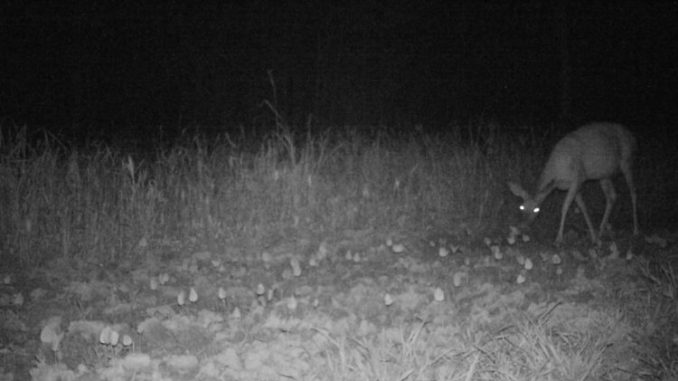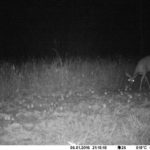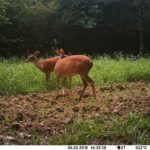
At the 2016 Southeast Deer Study Group Meeting, a presentation was made concerning different food plot mixtures and their effectiveness in attracting deer.
Researchers planted four different seed mixtures in the fall, measuring the vegetation growth (browse availability) and feeding preference (browse utilization). Trail cameras were used to monitor deer as they fed in the various plots.
Researchers found no difference in growth rates, and there was also no preference differences — which basically means if you plant something in the fall for deer, they are going to eat it.
That’s especially true when most native browse species become dormant.
Fall plantings are, by far, the most-common deer plantings with which hunters are involved. This is especially true for leased land; hunters on leased land will make plots for the deer season but once it is over, most are not concerned with what happens on the landscape during the spring and summer.
On the other hand, private landowners will be the managers most likely to make spring and summer plantings for deer. One who owns land has a strong connection to it and a desire to see it productive.
If you are really trying to do something that really benefits deer, spring and summer is the time deer benefit the most from your effort.
However, many of the cool-season forages planted for deer in the fall really begin to grow in the spring, providing deer with quality forages for several months.
Consequently, if one chooses the right seed mix for fall planting, forages will grow and attract deer for the hunting season and provide forage for deer in the spring and early summer months, during the growing season for deer.
Winter grasses such as oats, wheat and rye grass are forages commonly planted for deer.
Wheat and rye grass can easily be planted simply by mowing and sowing the seed on the ground. Add fertilize and nitrate, and one has green grass for the hunting season.
The key is to clip close enough to the ground so the seed comes into contact with dirt.
Of course, if you have the proper equipment to prepare a nice seed bed, germination will be better.
Deer will browse the forage through the winter, but as the grasses mature and begin to produce seed heads in the spring, deer stop feeding on it.
Plantings just utilizing winter grass will be less expensive than those that incorporate other seeds, but they provide no benefit for deer in the spring.
Many hunters report they planted seed but it did not grow. One way to document germination and plant growth is to put a wire cage in the plot to keep deer or rabbits from eating the plants.
This provides visual documentation of your planting.
From what I have seen over the years, the problem is not with the planting but with too many deer, rabbits and turkeys. If deer numbers are high, a planting can be easily overbrowsed.
The planted grasses are eaten up and slowly disappear; native winter plants begin to grow and the food plot looks like a putting green.
A hunter who wants the best of both worlds would be wise to make fall plantings utilizing seed mixes that will produce forage for the hunting season and also produce forage for the spring and early summer growing season.
Clover, winter peas, chickory and brassicas (turnips and mustards) are common species available from seed stores for fall plantings.
Fall mixes incorporate many of these seeds, as well as winter grasses such as wheat and oats. Mixes that are heavy with grass seed will cost less than those that have no grass seed.
Cool-season forages that benefit deer and other wildlife species such as turkeys should have several species of clover in the mix. Crimson clover, white and red clover and arrow-leaf clover are always a good combination for mixes.
Crimson clover grows well in the winter and flowers in the early spring, and then it dies as the temperatures rise in early summer. The other clovers will continue growing through the summer if spring and summer rains keep moisture in the soil, providing quality forage for the deer at a time when they need it.
Winter peas don’t produce much growth in the winter, but as spring arrives growth increases and provides quality nutrition for deer. However, the small winter pea plants can be eaten up during the winter, leaving nothing for the spring. I have not seen many of the plots where I planted peas in the fall have any kind of stand in the spring.
I am not sure it is worth the expense of adding these peas to the mix.
Chickory is a cool-season forage that grows well in our soils and, when mixed with clover, provides quality nutrition in the spring. Chickory and clover make a good combination for deer.
Chickory tolerates mowing during the spring, so when the grasses begin taking over a plot take the tractor you can raise the mowing up and clip the grass stalks. Chickory produces new growth when cut.
Large-scale winter plantings using clover and chickory will do much more for deer than winter grass plantings.
In my opinion, the perfect fall planting mix would contain crimson clover, arrowleaf clover, red clover, white clover and chickory. If you wanted some winter grass in the mix, I would get a separate bag of wheat or oats and lightly sow in some grass.
I like to plant in strips, having clover and chickory strips, winter grass and clover strips with turnips and mustards, along with some strips with just winter grass that can be plowed up after they seed out and replanted in the spring or summer.
Losing Jackson-Bienville is indeed disappointing
As noted by the editor Andy Crawford in the July issue, Jackson-Bienville WMA has been dropped from the system.
This is not only a major loss for public land deer hunters, but JB provided hunting opportunities for all groups of hunters. While generations of hunters have benefited from this WMA, JB was also a proving ground for generations of wildlife biologists.
An entire book could be written about the wildlife management work that was done on this area since the ’50s.
Public-land hunters in North Louisiana have lost ground over the past few years with the loss of Georgia-Pacific, Union and now Jackson-Bienville WMAs.
This is not a good start for the new administration: Let’s hope the budget crisis in the state doesn’t bring any more surprises like this one.




